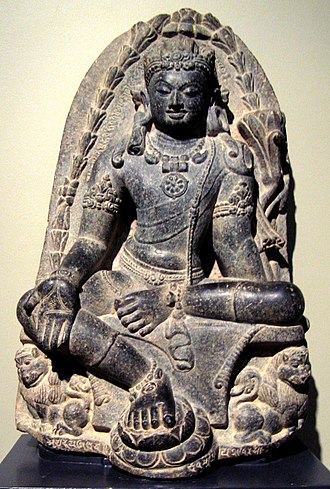Manjushri
Gematria Values
Manjushri (Sanskrit: मञ्जुश्री; traditional Chinese: 文殊師利; simplified Chinese: 文殊师利; pinyin: Wénshūshīlì; Japanese: Monju; Tibetan: འཕགས་པ་དབང་པོ་, Phags pa Dbang po) is a significant figure in Mahayana Buddhism, often revered as a bodhisattva who represents the perfection of wisdom. He is typically depicted as a young man wielding a flaming sword in his right hand, symbolizing the destruction of ignorance, and holding the Prajnaparamita Sutra in his left hand, representing transcendental wisdom. Manjushri is also associated with the vajra, a ritual tool symbolizing indestructibility and the five wisdoms. In various Buddhist texts, he is often depicted as a close assistant to the Buddha and a teacher of high spiritual attainments. The name Manjushri is composed of two Sanskrit words: manju meaning "gentle" or "sweet" and shri meaning "glory," thus translating to "Gentle Glory" or "Sweet Glory." In Tibetan Buddhism, he is considered one of the principal bodhisattvas and is often invoked for wisdom and insight. There is no direct translation for Manjushri in Hebrew, as the concept is specific to Buddhist tradition.
Wikipedia Information
